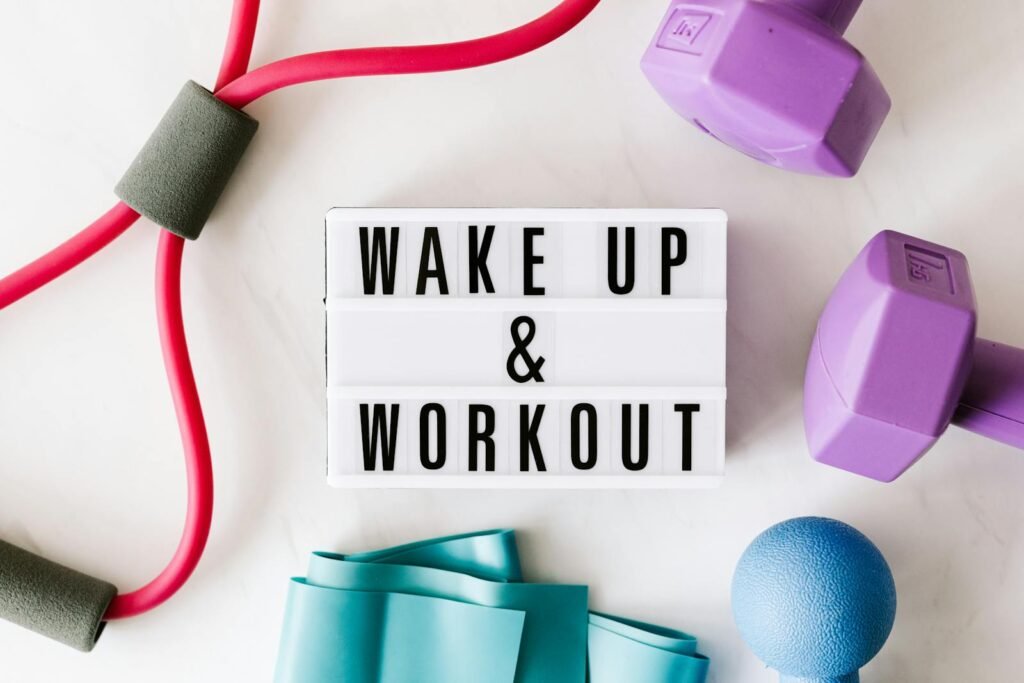Did you know cardio training can beat weight training in fat loss by up to 30%? In 2025, we’re moving away from old ways of losing weight. We’re now focusing on a mix of good nutrition and gentle workouts for better results.
The way we lose weight is changing. Gone are the days of extreme diets and workouts. Now, experts say we should aim for a balanced mix of diet and exercise. This approach helps keep us healthy and boosts our metabolism over time.
Your weight loss journey in 2025 will be all about knowing what your body needs. Low-intensity workouts are becoming a key part of losing weight. They offer a softer but effective way to reach your fitness goals.
Key Takeaways
- Cardio training is more effective for fat loss compared to weight training
- Sustainable weight loss requires a balanced approach to diet and exercise
- Low-intensity workouts can be a game-changer for consistent progress
- Nutrition plays a critical role in supporting your fitness goals
- Consistency is key to long-term weight management
Understanding the Science Behind Sustainable Weight Loss
Starting a sustainable weight loss journey is more than just wanting to lose weight. Your body’s complex processes are key to reaching your fitness goals. Learning about weight loss science helps you find fat-burning methods that work with your body.
Metabolic Adaptation and Weight Loss Dynamics
Your metabolism changes with calorie intake and exercise. When you aim for sustainable weight loss, your body adapts. This can sometimes slow down your weight loss.
- Metabolic rate can decrease by 15-25% during weight loss
- The body tries to save energy when you eat fewer calories
- Regular exercise keeps your metabolism flexible
Hormonal Influences on Fat Burning
Hormones play a big role in managing your weight. Hormones like insulin, cortisol, and leptin affect how your body burns fat and keeps a healthy weight.
| Hormone | Role in Weight Loss | Optimization Strategy |
|---|---|---|
| Insulin | Controls blood sugar and fat storage | Eat low-glycemic foods and exercise regularly |
| Cortisol | Stress hormone that affects metabolism | Manage stress, get enough sleep |
| Leptin | Helps control hunger and fullness | Eat balanced meals and control portion sizes |
Mastering Caloric Deficit
The key to losing weight is to burn more calories than you eat. This is called a calorie deficit. Studies from the National Weight Control Registry show that smart calorie management leads to lasting weight loss.
Successful weight loss is 80% nutrition and 20% exercise.
By grasping these scientific basics, you can create a weight loss plan that fits your body’s needs. This approach helps you achieve lasting results.
Key Components of a Balanced Weight Loss Diet
Creating a balanced diet for weight loss needs careful planning and knowing about nutrition. Start your healthy lifestyle by picking the right foods that help you lose weight.
A good weight-loss diet isn’t about cutting out everything. It’s about making healthy eating habits that last. The 80/20 rule is a great tip for keeping on track. It lets you eat 80% whole foods and 20% of what you like.
- Prioritize lean proteins for muscle maintenance
- Include complex carbohydrates for sustained energy
- Incorporate healthy fats for metabolic support
- Choose whole foods over processed alternatives
Planning your meals is key to sticking to your diet. By planning ahead, you can control how much you eat, avoid eating too much, and keep your diet balanced all week.
“Nutrition is the foundation of any successful weight loss journey” – American Dietetic Association
Smart snacking helps control hunger and keeps your energy up. Try these healthy snack ideas:
- Greek yogurt with berries
- Apple slices with almond butter
- Hard-boiled eggs
- Vegetable sticks with hummus
It’s important to cut down on sugar and avoid processed foods. Stick to whole, unprocessed foods for the best nutrition and fewer empty calories.
Remember, a balanced diet is not about perfection but consistency and making informed nutritional choices.
weight loss 2025 effective weight loss strategies low-intensity workouts LISS
Finding the right exercise can change your weight loss journey. Low-intensity steady state (LISS) cardio is a key strategy for lasting fitness gains.
Benefits of Low-Intensity Steady State Cardio
LISS cardio has many benefits for those who want to lose weight. Studies show it improves heart health and reduces injury risk. It also helps burn fat and boosts mental well-being.
“Low-intensity exercise can be just as effective as intense workouts when done consistently and strategically.” – Fitness Experts
Implementing LISS into Your Routine
Your LISS workout should keep your heart rate at 50-65% of your max. Good LISS activities include:
- Brisk walking
- Swimming
- Cycling
- Elliptical training
- Yoga
Combining LISS with Other Exercise Forms
Mixing LISS with other workouts is key for a balanced routine. For best results, try:
- Three LISS sessions per week for beginners
- Strength training 2-3 days weekly
- Adding high-intensity interval training now and then
Adding LISS cardio to your routine helps you lose weight effectively. It’s sustainable, fun, and fits your fitness level.
Creating a Sustainable Workout Schedule
Creating a good workout schedule is key for lasting weight loss. The Centers for Disease Control and Prevention say you need at least 150 minutes of moderate-intensity aerobic activity each week. This helps you reach your fitness goals.
Your workout plan should fit your life. Here are some tips for a balanced exercise routine:
- Aim for 3-5 exercise sessions per week
- Combine different workout types for maximum results
- Include both cardio and strength training
- Schedule dedicated rest days for recovery
The American Heart Association says to mix up your workouts. This keeps you motivated and prevents plateaus. Try these strategies:
- Start with low-intensity activities like walking
- Gradually increase workout intensity
- Mix High-Intensity Interval Training (HIIT) with steady-state cardio
- Incorporate strength training 2-3 times weekly
“Consistency is more important than perfection in your fitness journey.” – Fitness Expert
Having a flexible and fun workout schedule helps you stay on track. Remember, small, consistent steps lead to progress.
Pro tip: Listen to your body and adjust your workout intensity as needed. Rest and recovery are just as important as the exercise itself.
The Power of Nutrition Timing and Meal Planning
Understanding nutrition timing and meal planning can transform your approach to weight management. Knowing when and what to eat can boost your metabolism and energy. It also helps with losing weight.
Pre- and Post-Workout Nutrition Strategies
Your body needs certain nutrients before and after workouts. This helps you perform better and recover faster. Good meal planning means knowing these important nutrition times:
- Pre-workout meals should include carbs and lean proteins that are easy to digest
- After working out, focus on foods that help your muscles recover and give you energy back
- Eating protein within 30 minutes after exercise helps fix your muscles
Strategic Meal Timing for Weight Loss
When you eat is just as important as what you eat for weight loss. Here are some smart ways to time your meals:
| Meal Timing | Metabolic Impact | Weight Loss Benefit |
|---|---|---|
| Early Breakfast | Boosts metabolism | Reduces overall daily calorie intake |
| Smaller, Frequent Meals | Stabilizes blood sugar | Prevents overeating |
| Evening Protein | Supports muscle recovery | Increases overnight metabolism |
Hydration and Weight Management
Staying hydrated is essential yet often overlooked in diet plans. Drinking water supports weight loss by curbing hunger when consumed before meals and maintaining a healthy metabolism.
“Your body is a complex machine. Nutrition timing is the key to unlocking its full power.” – Fitness Nutrition Expert
By using these nutrition timing tips, you’ll have a solid plan for meal planning. This plan will help you reach your weight management goals.
Mind-Body Connection in Weight Loss Journey
Your weight loss journey is more than just changing your body. The mind-body connection is key to lasting health. Knowing how your mind affects your fitness can help you manage weight better.
Mindfulness can change how you view weight loss. It helps you:
- Spot when you eat out of emotions
- Find better ways to handle stress
- Love your body more
- Stay strong when fitness gets tough
“Your mind is the most powerful tool in your weight loss arsenal.” – Fitness Expert
Adding meditation and yoga to your routine can change your life. These practices lower stress hormones that can stop weight loss. They teach you to hear your body’s real needs, not just cravings.
Here are some tips to strengthen your mind-body connection:
- Do 10-minute meditation every day
- Eat mindfully
- Write down your fitness and feelings
- Set goals that are kind to yourself
Remember, lasting weight loss is about balance between your mind and body.
Progressive Overload and Adaptation Techniques
Starting a fitness journey needs careful planning and knowing how your body reacts to exercise. Progressive overload is key for building strength. It lets you keep pushing your muscles and reach your fitness goals.
Building Strength Gradually
Building strength is not about doing intense workouts all at once. It’s about slow, steady progress. By gradually increasing the intensity of your workouts, you lower the risk of injury. This also helps your muscles grow steadily. Here are some important strategies:
- Increasing weight by 2-5% each week
- Adding extra repetitions to existing exercises
- Reducing rest periods between sets
- Implementing more complex movement patterns
Monitoring Progress and Adjusting Goals
Keeping track of your fitness journey is key to staying motivated and improving. Here are some ways to monitor your progress:
- Regular performance assessments
- Detailed workout logs
- Body measurement tracking
- Strength progression charts
“Success is not about perfection, but consistent progression.” – Unknown Fitness Coach
Recovery Techniques
Good recovery techniques are vital for building strength that lasts. They help your muscles heal and prevent burnout. Here are some strategies to try:
| Recovery Method | Benefits |
|---|---|
| Active Rest Days | Promotes blood circulation and muscle recovery |
| Quality Sleep | Supports hormone regulation and muscle repair |
| Proper Nutrition | Provides essential nutrients for muscle growth |
| Stretching | Reduces muscle tension and improves flexibility |
Remember, progressive overload is a detailed approach to fitness. It needs patience, consistency, and understanding of your body’s unique responses to exercise.
Common Weight Loss Plateaus and Solutions

Weight loss plateaus can be really frustrating. They happen to many people on their fitness journey. Knowing what causes them can help you find ways to keep losing weight.
“Plateaus are not the end of your weight loss journey, but an opportunity to reassess and adapt your approach.” – Fitness Experts
Spotting the signs of a weight loss plateau is key. Your body’s metabolism can slow down, making it harder to lose weight.
- Check your calorie intake and make changes if needed
- Add strength training to boost your metabolism
- Change your workout routine to keep challenging yourself
- Look into hormonal imbalances
The Centers for Disease Control and Prevention say losing 1 to 2 pounds a week is safe and effective. If you’re not losing weight, try these tips to get your metabolism going again:
| Strategy | Impact on Weight Loss |
|---|---|
| Increase protein intake | Boosts metabolism by 7% |
| High-Intensity Interval Training | Reduces body fat after 12 weeks |
| Sleep optimization | Reduces weight gain risk |
Getting help from a professional can give you tailored solutions to beat weight loss plateaus. Keep going, stay patient, and be open to changing your plan. Losing weight is a journey of learning and adjusting.
Lifestyle Modifications for Long-Term Success
For lasting weight control, you need more than just quick diets. Your path to wellness includes making a plan that covers all areas of health.
“Lasting transformation comes from consistent, small changes that become lifelong habits.”
Important changes for keeping weight off include:
- Creating regular exercise habits
- Practicing mindful eating
- Using stress-reducing methods
- Getting enough sleep
- Surrounding yourself with supportive people
Good nutrition is key for lasting weight loss. Studies reveal that about 70% of belly fat loss comes from smart diet choices. Aim to make a diet plan that:
- Removes junk and sugary foods
- Adds foods rich in nutrients
- Keeps the right balance of nutrients
- Helps your metabolism
| Lifestyle Factor | Impact on Weight Loss |
|---|---|
| Regular Exercise | Boosts metabolism, burns calories |
| Stress Management | Reduces cortisol-induced fat storage |
| Hydration | Supports metabolism, reduces cravings |
| Sleep Quality | Regulates hunger hormones |
Remember, sustainable weight loss is a holistic journey that encompasses physical, mental, and emotional well-being. Making these lifestyle changes lays the foundation for long-term health and successful weight management.
Conclusion
Effective weight loss in 2025 means looking at nutrition, fitness, and well-being as a whole. It’s not just about losing weight. It’s about building a healthy lifestyle that improves your health in every way. By learning about weight management and using the right nutrition and workouts, you can see lasting changes.
The secret to losing weight is being consistent and making choices that fit you. With 48.9% of US adults facing obesity by 2030, starting early is key. Aim for small, steady changes, balanced eating, and fun activities that you can do every day.
Remember, losing weight is a long-term effort, not a quick fix. A good plan includes controlling what you eat, exercising regularly, and staying mentally strong. By aiming for a calorie deficit, walking 8,000 to 10,000 steps a day, and picking exercises you love, you’ll set yourself up for success.
Your weight loss journey is special, and success comes from knowing your body and being patient. With the right mindset and a smart plan, you can beat obstacles and become a healthier, happier you.





